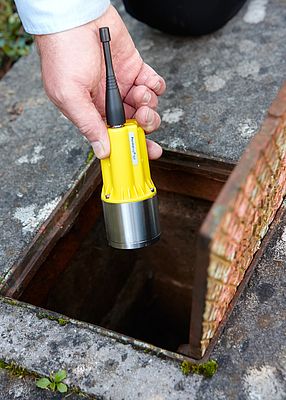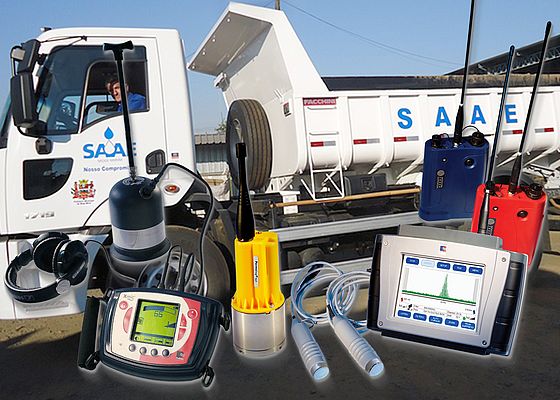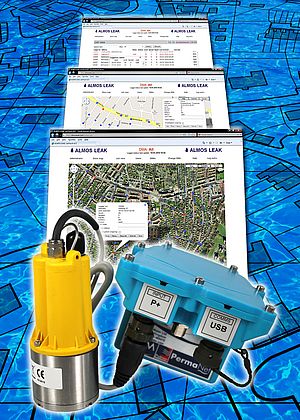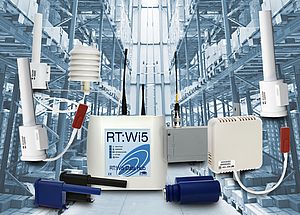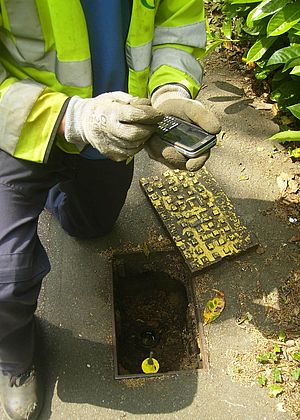Leak noise sensors have enabled the Water and Sewerage department in a Brasilian city, to find more than 100 leaks that were invisible before, resulting in a recorded 12.6% reduction in water loss percentage.
Mogi Mirim, a municipality in the state of São Paulo in Brazil, has recently invested more than €4.5m in sanitation and water resources. This includes purchasing equipment to improve the infrastructure and operation of the city’s water and sewage system, in order to enhance the standard of service provided to the population.
With funding from the municipality, the city’s Autonomous Service for Water and Sewerage department (SAAE) has purchased a range of vehicles and equipment to improve the water network. Recent purchases include sophisticated acoustic technology from UK company HWM that monitors for, identifies and then pinpoints the location of leaks in underground water pipe networks.
The Permalog+ leak noise logger are deployed on water networks throughout the world. The small, battery-powered devices listen to noises travelling through pipes and can recognise the distinct sound that water makes when it escapes under pressure. The result is that any existing or new leaks, even if not outwardly visible above ground, are very quickly identified by the Permalogs and relevant personnel alerted so that further investigation and repairs can take place as soon as possible.
To pinpoint the exact leak location on-site, the MicroCorr Touch leak noise correlator is used to show operators exactly where the problem is, accurate to centimetres. The correlator works by measuring the time difference at which leak noise is received by sensors deployed onto the pipe both sides of the suspected leak. Leak noise travels at a constant velocity that depends on the material and diameter of the pipe. As a result, the time difference between the arrival time of the leak noise at each sensor, combined with the velocity, enables the exact position of the leak to be quickly and accurately calculated.
Whilst the principle of correlation has remained unchanged since HWM developed the world’s first correlator over thirty years ago, the technology behind it has advanced considerably. In addition to using highly sensitive accelerometers on the pipes for accurate acoustic detection, the MicroCorr Touch features a high-visibility colour touchscreen and intuitive, menu-driven software to make it as easy as possible to enter data and view results in all conditions. The system also incorporates a unique automated filtering intelligence system (AFIS) to automatically run 55 different filter combinations on the data until the clearest and most accurate result can be displayed. Tests have shown that AFIS significantly improves leak pinpointing on a wide range of different pipe materials and sizes, making it arguably the easiest to use and most accurate correlator the company has ever produced.
It is very time consuming, expensive and disruptive for a water company to excavate a section of buried water pipe only to discover that the leak is somewhere else. Therefore, as a final check that the leak has been successfully identified and located, SAAE uses HWM’s Xmic electronic ground microphone to amplify the leak noise, acting as a final confirmation before digging down to make the necessary repairs. Using the latest acoustic amplification technology, Xmic displays results graphically on a hand held screen to confirm the leak position. This combination of technologies and approaches drastically reduces the number of “dry holes” that could be dug before the leak can be repaired.
Pauloroberto Silva Jnr, who leads the technical division of water distribution management for SAAE, recognises the improvement that HWM’s groundbreaking leak detection equipment has already made to the municipality’s water supplies: “Following our investment in water loss equipment, the Permalog+ leak noise sensors and MicroCorr Touch correlators have already enabled the SAAE to find more than 100 leaks that were invisible before”, he said, which has resulted in a recorded 12.6% reduction in water loss percentage since the new technology has been in use.
SAAE is also benefitting from other substantial cost savings as a result of introducing such an effective leak detection programme. Previously, the municipality had to operate its water treatment plant for twenty-three hours a day to meet demand. After successfully identifying and repairing so many leaks, Silva reported that they are now able to reduce uptime by three hours per day, which has in turn reduced electricity consumption by over 10%. The new equipment has therefore not only already produced an excellent monetary return on investment, it has also helped Mogi Mirim reduce its carbon footprint and environmental impact.
15 Pressure Reducing Valves (PRVs) have also been installed around the city, and new pipes and fittings brought in to reduce the frequency of maintenance operations required on the network. As the city prospers and grows, SAEE will also be constructing a new water storage facility to meet the increased demand throughout Mogi Mirim. Also planned is a collector sewer stream in nearby Bela Vista which will connect to the existing sewage treatment plant. Land bordering the water treatment facility has also been purchased which will enable its future expansion and double the current capacity.
According to Evandro Trentin, the administrative and financial director of SAAE who manages the water and sewage infrastructure at Mogi Mirim, these investments have already proved their worth because of the resulting improved the quality of life for everyone in the area.
"Our sanitation and water resources need a great deal of attention and we are determined to improve them. Over the coming years, the investments we’ve made will ensure that we can meet the increasing demand for water in the region.” Having already secured the city’s water systems for over 50 years, Mogi Mirim’s SAAE looks set to continue its good work and improve its services for the population with intelligent investments embracing the future of water management.


